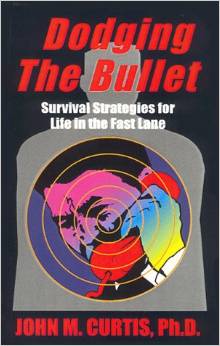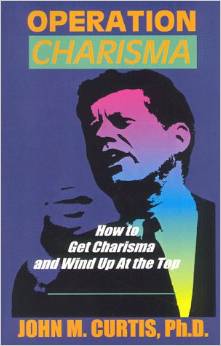LOS ANGELES.–NASA Administrator Bill Nelson, 81, announced Aug. 24 that Boeing Starliner was unsafe to fly its two astronauts Butch Wilmore and Suni Williams back to earth due to thruster malfunctions and helium leaks. Flown to the International Space Station June 5, the mission was supposed to last only eight days, that was 80 days ago, now forcing Wilmore and Williams to stay on the ISS until a SpeaceX Dragon spacecraft can fly them safely back to earth in early February. Wilmore and Williams, together with Boeing engineers, said further testing of Starliner while at the ISS indicates that the new space vehicle was safe to fly the astronauts back to earth. “Their spacecraft is working well, and they’re enjoying time on the space station,” said NASA Crew Program manager Steve Stich in June. Nelson said yesterday that “their commitment to safety” will not allow Starliner to fly with humans onboard.
Nelson’s decision was a humiliating blow of Boeing Space Operations that received in 2014 $4.8 billion from NASA to develop a replacement spacecraft to the Space Shuttle that was retired in 2011. NASA had no replacement vehicle for the aging Space Shuttle in 2011, commissioning Boeing and a fledgling space company owned by 53-year-old Elon Musk named SpaceX to develop new spacecrafts to ferry supplies and astronauts to the ISS. Musk received almost half, $2.8 billion to develop its own rocket and spacecraft from scratch. Space experts thought that Boeing Space Systems had a clear advantage to replace the Space Shuttle first. By 2020, Musk delivered the first reusable Falcon 9 rocket and Dragon Crew Spacecraft to ferry supplies and astronauts to the ISS. Boeing continued to struggle to complete Starliner with endless engineer snafus, flight delays and cost overruns.
When Starliner finally launched from Space Launch Complex 41 at Cape Canaveral June 5, there were high hopes that two space companies would have usable space vehicles to transport humans to the ISS. Before Musk started human flights on Dragon in 2020, NASA paid the Russian Space Agency Roscosmos $86 million to ferry U.S. astronauts to-and-from the ISS, until Musk launched Dragon spacecraft in 2020. NASA currently pays SpaceX $55 million to ferry astronauts to-and-from the ISS. Crew Dragon is expected to launch Sept. 24 with as scaled back mission to leave two seats for Wilmore and Williams on a return flight in Feb. 2025. NASA thought a competitive bid process was the way to go to develop America’s next generation of space vehicles to replace the Space Shuttle, commissioning Boeing and SpaceX to complete their spacecrafts as soon as possible.
SpaceX hit the ground running with Musk hiring a team of former NASA engineers to work on the most ambitious project since NASA first developed the Mercury manned flight with Alan Shepard May 5, 1961. Musk’s task was actually far more ambitions to develop an improvement on the Soyuz capsule with more capabilities, certainly the most advance technology than any spacecraft in history. Boeing was given the same task but the larger bureaucracy didn’t complete the Starliner spacecraft as easily. “Space fling is risky, even at its safest and eve at its most routine, and a test flight is neither safe nor routine,” Nelson said referring to Starliner. Nelson announced that Starliner would return to earth but without astronauts onboard, even though Boeing engineers deem Starliner safe to fly Wilmore and Williams. Nelson and his team of space experts disagree.
NASA know all about spaceflight, with the highest safety standards, being risky business, with high profile Space Shuttle disasters with Challenger in 1986 and Columbia in 2003, losing 14 astronauts. “The decision to keep Butch and Suni aboard the International Space Station and bring the Boeing Starliner home unscrewed is a result of a commitment to safety. Our core values is safety, and it is our North Star, and I’m grateful to NASA and to Boeing for their teams, for all the incredible and detailed work to get to this decision,” Nelson said. NASA doesn’t believe that Boeing’s Starliner with its thruster problems and helium leaks is safe to endure the 3,500 degree temperatures endured during reentry. Boeings must go back to the drawing board and fix the issues that NASA deems unsafe with the Starliner before it flies again with astronauts onboard.
Elon Musk and SpaceX doesn’t get enough credit for working out all the bugs with its Falcon 9 and Dragon Crew spacecraft over four years ago. Musk go the U.S. manned space program back on its feet after NASA failed to develop an alternative space vehicle its retired the aging, obsolete Space Shuttle fleet in 2011. Why NASA didn’t develop a replacement to the Space Shuttle is anyone’s guess but SpaceX made clear that a public-private partnership was the best way to go. If Boeing used its NASA cash to collaborate with SpaceX it would have been far better for U.S. manned space operations. Boeing’s Starliner should have been developed with interchangeable parts with SpaceX, including astronaut space suits. Boeing made huge mistake going it alone without collaboration with SpaceX. NASA’s plan to have competitive space companies backfired, instead of collaboration.
About the Author
John M. Curtis writes politically neutral commentary analyzing spin in national and global news. He’s editor of OnlineColumnist.com and author of Dodging The Bullet and Operation Charisma.



